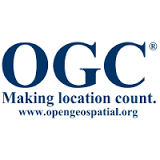While IoT continues to grow in hype and in real importance, all of this excitement will start to wane if we do not see a significant degree of standardization of device types, measured quantities, and applications in the very near future. Unfortunately, while there has been a great deal of interest in standardization, and a proliferation of new standards bodies (see http://www.pcworld.com/article/2863572/iot-groups-are-like-an-orchestra-tuning-up-the-music-starts-in-2016.html), much of the work does not build on existing standards which are already designed to capture sensor descriptions, measured quantity descriptions, and location – all things which are essential in virtually all IoT deployments. I am thinking here of the work of the Open Geospatial Consortium on the Geography Markup Language (GML), and on the Sensor Web Enabled (SWE) suite of standards that include Observations and Measurements. Much of the SWE work cries out for online registries of shared quantities and definitions, which is no less important for IoT than it is for sensors. In my view, the OGC CSW-ebRIM Registry Platform standard can fill this need and, at the same time, greatly accelerate the standardization of IoT.
How might this work?
Using CSW-ebRIM, one can easily create a generic model of an IoT “device” and then use that model to support device registration and discovery. Registration would be accomplished either by the device itself sending a registration transaction directly, or by having some representative application do the registration.
The same model of an IoT device could include support for standard vocabularies for physical quantities and qualities (e.g. colour), including appropriate units of measure. A device could then use these definitions to encode values of these quantities that are sent to data recording and actuating devices.
Native encoding of the physical quantities would be in XML (ebRIM XML) but this could be easily and automatically translated to JSON, or to either FastInfo Set (XML Binary Encoding) or EXI (see http://www.w3.org/TR/exi/). These formats minimize data size and enhance parsing performance in devices, while requiring minimal processing resources.
The key issue in IoT standardization is not about low level issues like network protocols or operating system support – it’s about standardization of device and physical quantity semantics. Using the CSW-ebRIM standard enables the definition of controlled (standard) vocabularies for these items, acquiring serialization for the web automatically (see the previous blog – “Toward a Universal Data Interchange Standard Factory”).
Registry Platforms lend themselves naturally to supporting IoT for device registration and discovery, enabling rapid creation and support for standardized data transport, even one where things are customized to particular IoT application subdomains. To take this a step further, a Registry might act as a data collection node and then facilitate automated translation of the data to different content models, or to different serializations (see the previous blog – “Toward a Universal Data Interchange Standard Factory”).
Standardization for IoT device models, applications, registration, data transport, and discovery is going to be crucial to low device costs, and ultimately to the whole IoT endeavour. Registry Platforms can play a crucial role in achieving and supporting this standardization.




Be the first to comment